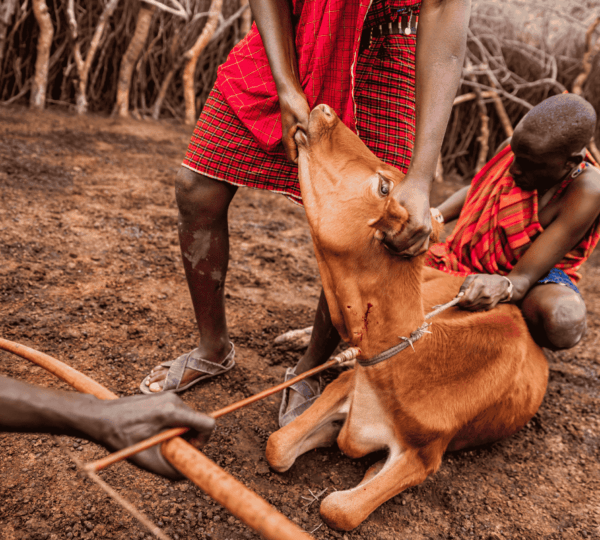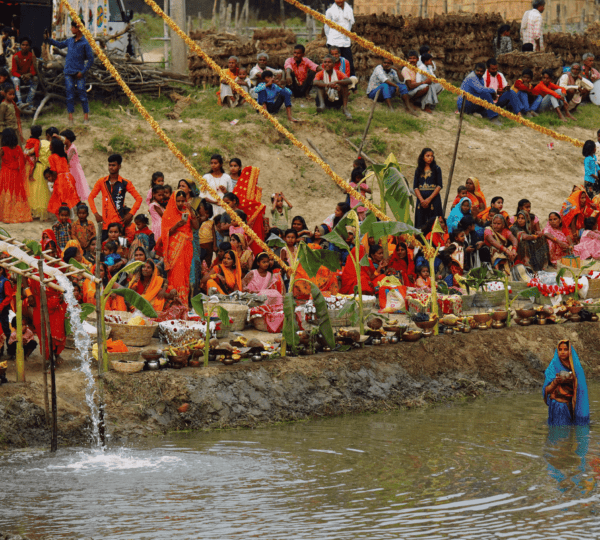
Unique Food Customs and Rituals Around the World: A Journey Through Cultures
As kids, my dad sometimes shared stories from his travels as a youth with us. One time, he traveled to Kenya with a friend, who was a local and attended one of the village celebrations. He told us how the community gathered under the open sky, and a large goat was slaughtered as part of the ceremony. The meat was roasted over an open flame, and everyone sat around to share the meal.
What fascinated him most was their custom of offering the goat’s liver to the guest of honor, it was considered a delicacy and a sign of utmost respect. My dad, being the guest of honor that day, found himself holding the liver, unsure whether to eat it or politely decline. He chose to take a bite, and the villagers cheered, welcoming him as one of their own.
This story stayed with me because it showed how food isn’t just about sustenance—it’s a language of connection, respect, and culture. It plays a central role in social, spiritual, and family life. From rituals to ceremonial feasts, food often carries with it deep meaning, symbolizing more than just the taste or the nutritional value. This blog post will take a deep dive into some of the most unique food customs and rituals practiced around the world.
1. South Korea: Honoring Ancestors with Charye
In South Korea, food plays a central role in Charye, a ritual to honor ancestors. This tradition is observed during significant holidays like Chuseok (Korean Harvest Festival) and Seollal (Lunar New Year). Families prepare an elaborate spread of symbolic foods, including rice, fish, meat, fruits, and rice cakes, meticulously arranged on a ceremonial table. These offerings are prepared following traditional guidelines, reflecting deep respect and gratitude for ancestors while seeking blessings for prosperity and health.
The preparation process itself is a family bonding experience, with each member contributing to the ritual. For example, meats and fish are sliced in specific ways, while fruits are chosen for their symbolic colors and shapes. The table layout, too, follows specific rules: fish face left, meat goes to the right, and fruits are arranged by size. This meticulousness symbolizes balance and harmony.
The significance of Charye extends beyond the ritual itself. It instills a sense of continuity, connecting families to their heritage. In 1982, the South Korean government recognized Charye as an important cultural practice, ensuring its preservation amidst modernization. Today, while younger generations adapt the tradition, its core values of respect and familial connection remain steadfast.
2. Kenya: The Maasai Blood and Milk Ceremony
In the Maasai culture of Kenya and Tanzania, food customs are deeply intertwined with spiritual and communal life. One of the most intriguing traditions is the consumption of a mixture of cow’s blood and milk, a sacred drink used in rites of passage, healing ceremonies, and celebrations. The Maasai regard cows as sacred, and their non-lethal method of extracting blood demonstrates their respect for and harmonious relationship with livestock.
This ritual drink is particularly significant during key milestones such as weddings or the initiation of warriors. For the Maasai, consuming this mixture symbolizes strength, vitality, and a deep connection to their ancestors and the land.
Dr. Elizabeth Karanja, an anthropologist specializing in East African traditions, notes that this custom is a testament to the Maasai’s resourcefulness and reverence for nature. Despite challenges like urbanization, the Maasai continue to preserve this tradition, blending it with modern influences while maintaining its symbolic meaning.
3. Italy: The Art of La Scarpetta
In Italy, dining is more than eating—it’s an art form, and la scarpetta embodies this philosophy. This custom, where a piece of bread is used to scoop up the last remnants of sauce from a plate, is a cherished tradition across the country, particularly in the south.
The name la scarpetta translates to “little shoe,” symbolizing how the bread “sweeps” up the sauce. This simple act underscores Italians’ appreciation for food, ensuring no drop of a carefully prepared dish goes to waste. It’s a practice that also honors the cook, as it shows genuine enjoyment of their culinary efforts.
While considered casual, la scarpetta is steeped in cultural pride. Italian food historian Massimo Rinaldi explains, “This humble gesture captures the essence of Italian dining—celebrating flavors, savoring every bite, and honoring tradition.” It’s also a way for families to connect, as sharing meals often includes playful exchanges over who gets the last bit of sauce.
4. Nepal: The Tihar Festival and the Worship of Cows
Tihar, Nepal’s festival of lights, celebrates the harmonious relationship between humans, animals, and nature. Over five days, each dedicated to a different animal, food takes on a sacred role. The most significant day is dedicated to cows, revered for their symbolism of abundance and maternal care.
Families prepare rice, milk-based treats, and other delicacies to offer to cows. The animals are adorned with colorful garlands, their horns painted, and given freedom to roam as a sign of gratitude. The act of feeding the cows is believed to bring blessings of prosperity and well-being to the household.
This festival is not just about honoring animals—it reinforces community bonds. Neighbors exchange special foods like sel roti (a traditional rice donut), and children go door-to-door singing traditional songs in exchange for treats. A study in Cultural Heritage Quarterly highlights how Tihar fosters respect for nature and a spirit of unity, making it one of Nepal’s most cherished celebrations.
5. Philippines: Boodle Fight Tradition
The boodle fight in the Philippines transforms dining into a communal and egalitarian experience. Originating from the Philippine military, this tradition involves laying out rice, grilled meats, seafood, and vegetables on banana leaves, with everyone eating directly with their hands.
The practice signifies equality, as rank or status is irrelevant during the meal. Today, it’s a popular way to celebrate reunions, birthdays, or even weddings, symbolizing togetherness. The tactile nature of the meal—using hands instead of utensils—enhances the sensory experience and deepens connections among participants.
“Boodle fights encourage sharing, laughter, and a sense of unity,” explains Filipino cultural expert Dr. Amado Santos. Whether it’s a casual backyard gathering or a large family reunion, the boodle fight serves as a reminder of the Filipino value of bayanihan—community spirit.
6. Thailand: Songkran Water Festival and Food Sharing
During Songkran, Thailand’s New Year celebration, food is as central as the water fights that mark the festival. Families prepare traditional dishes like som tam (papaya salad), curries, and sticky rice, which are shared among relatives and offered to monks in a merit-making ritual.
The act of food sharing during Songkran symbolizes cleansing and renewal, key themes of the
7. Peru: Pachamanca Earth Oven Feast
In Peru, Pachamanca is a unique culinary ritual where food is cooked in an earth oven, a practice dating back to the Inca Empire. Meat, potatoes, corn, and herbs are placed on hot stones and covered with more stones and earth to cook slowly, infusing the food with a smoky flavor. Pachamanca is typically prepared for communal celebrations and symbolizes unity with the land.
This ancient method of cooking represents the Andean connection to Pachamama (Mother Earth), with locals believing that cooking in the ground returns some of the earth’s energy back to her.
8. Russia: Zazhigat – The Art of Vodka Toasting
In Russia, toasting with vodka has become a ritual in itself, often part of gatherings and celebrations. Each toast has a purpose, with guests taking turns to deliver heartfelt, humorous, or poignant toasts before drinking. It’s not uncommon to have several rounds of toasts, each one dedicated to friendship, family, love, or prosperity. Russians believe that this practice strengthens social bonds, and it’s often accompanied by traditional foods like pickles, salted fish, and rye bread.
This ritual reflects the value Russians place on meaningful gatherings and social connection. Cultural historian Dr. Antonina Ivanov states, “Vodka toasts are less about the drink and more about building deeper ties and trust within a group.”
Conclusion: A Global Table of Traditions
As we explore food customs around the world, we realize that food is so much more than what we eat—it’s a reflection of culture, history, spirituality, and relationships. Whether it’s the Japanese tea ceremony, Mexican Day of the Dead offerings, or Ethiopian communal meals, food rituals bind people together, creating a sense of community and shared identity.
In our increasingly globalized world, it’s important to acknowledge and appreciate the diversity of food customs. These rituals offer us an opportunity to understand different cultures on a deeper level, enriching our experiences and broadening our perspective.
References:
- Ogi, N. (2020). Tea Ceremony: A Cultural Reflection of Japanese Society. Tokyo: Kyoto Press.
- UNESCO. (2008). Día de los Muertos: Intangible Cultural Heritage. UNESCO.org.
- Rai, S. (2022). The Role of Food in Spiritual Health. New Delhi: Ayurvedic Publications.
- Zhang, L. (2023). Culinary Culture and Social Connection: The Hot Pot Ritual. Culinary Culture Review, 28(3), 45-67.
- Korhonen, R. (2021). The Finnish Sauna: Health, Tradition, and Food. Helsinki: Nordic Press.













